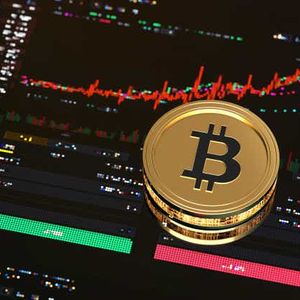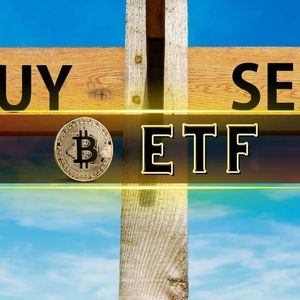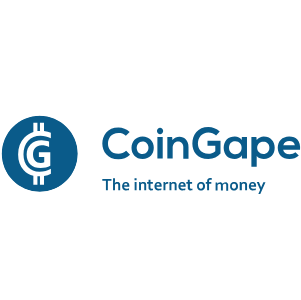2024-05-07 13:58:34
GBTC: The Bleed Is Ending
Summary Grayscale Bitcoin Trust transitioned from a close-ended fund to an open-ended fund, eliminating discounts and benefiting investors. The shift to an open-ended structure allows for in-kind redemptions, aligns trading price with net asset value, and improves tax efficiency. Inflows have resumed for GBTC, indicating reduced selling pressure and potential price stabilization for Bitcoin as a whole. Investment Thesis In recent months, Grayscale Bitcoin Trust (GBTC), has experienced restructuring, which, I believe, will be very beneficial for investors both in Bitcoin and in GBTC in the long run. In February, GBTC transitioned from a close-ended fund to an open-ended fund. As a close ended fund, GBTC faced larger tax bills, thus forcing their shares to trade at a discounted rate relative to the net asset value (NAV) based on the Bitcoin held. By selling their shares at a discounted rate, investors were not receiving the same level of returns they had come to expect with a Bitcoin investment. When new Bitcoin ETFs were being formed, GBTC acted as the largest source of selling pressure on Bitcoin. When this was occurring, GBTC saw large amounts of outflow, which led to an increase in the amount of Bitcoin being sold on the market, pressuring prices. As I mentioned above, in February, GBTC converted to an open-ended fund structure. This transition allowed for in-kind redemptions, meaning investors could now redeem shares directly for Bitcoin rather than selling shares in the secondary market. This structural change was huge for investor benefits, as the discount to NAV was practically eliminated. Based on the conversion of GBTC to an open-ended fund, I see GBTC as a strong buy. Not only are shares being sold closer to market price, but inflows have resumed. On top of this, as we have now passed the halving, the surplus of bitcoin has shifted to a deficit. This shift indicates that the selling pressure from GBTC, which had been a major market force, is decreasing. Background Grayscale Bitcoin Trust ( GBTC ) was established in 2013 , offering investors a way to gain exposure to Bitcoin without the complexities of direct purchases and secure storage. When first formed, GBTC was a close-ended fund. Because it was a close-ended fund, GBTC did not issue new shares or redeem existing shares, which often led to shares being traded at a discounted price. This discounted price hurt investors, decreasing investor benefits. The need for shares to be sold at a discounted price can be accredited to the difficulty behind adjusting supply and demand dynamics through the creation and redemption of shares. This situation was worsened by the fact that the Bitcoins held by the fund accrued large unrealized capital gains, impacting the fund's tax liabilities and operational strategies. Unrealized capital gains is also known as the increase in value of an investment that has not yet been sold for cash. To GBTC investors, this meant that the value of their investments in the trust were able to increase, despite no transactions actually occurring. The gains received from this were not realized until the Bitcoin had been sold. When these sales finally did occur, the trust was vulnerable to large tax bills, therefore affecting its performance and returns for investors. But, this has all changed, as I mentioned previously that GBTC is no longer a close-ended firm. As an open-ended firm, GBTC is able to provide the direct redemption of shares for Bitcoin at the actual NAV trading price. Because of this, the discounts GBTC experienced prior to this structural shift are no longer occurring . With the disappearance of these discounts, I predict investor returns are going to be much higher and much more reliable. How In-Kind Redemptions Work In-kind redemptions are used by exchange-traded funds (ETFs) like the Grayscale Bitcoin Trust to manage the fund's holdings and minimize tax impacts for investors. When investors decide to redeem their shares, instead of receiving a cash payment, they get a basket of securities that the ETF holds. This method does not require the fund to sell its holdings to raise cash, which helps avoid capital gains taxes directly. Since GBTC has converted to an open-ended ETF and gained in-kind redemption capabilities, I predict this will be extremely beneficial for investors. As a close-end fund, GBTC would trade at a discount to the value of the Bitcoin. With the shift to an open-ended structure, this discount has largely been eliminated because shares can now be redeemed directly for Bitcoin. This change enhances liquidity, aligns the trading price closer to the net asset value, and improves tax efficiency by minimizing unnecessary capital gains distributions, therefore more beneficial for investors. It also (and this is key) gives investors a reason not to sell. Before, the tax problems from unrealized gains on Bitcoin meant investors needed to move to other funds in order to get performance that more closely matched spot Bitcoin 1:1. This change in the fund structure fixes that. With this, I think GBTC is one of the best ways to play Bitcoin with a publicly traded fund. Grayscale has been in this business longer than most in terms of custodying Bitcoin, which comes with its own set of unique challenges. That's why I personally trust GBTC (for their experience) and also IBIT (since it's ran by Blackrock- the world's largest ETF manager). Valuation Since the new SEC approved ETFs were launched in January of 2024, investors who wanted to own Bitcoin were presented with new, tax efficient options. As a close ended fund, when buying or redeeming Bitcoin shares, GBTC shareholders were required to do so through the ETF. Considering that GBTC was the largest Bitcoin fund, this had a drastic effect on Bitcoin. Starting in January of this year, Bitcoin has seen $17.5 billion in outflows due to GBTC. What’s key is now that the fund has a new tax efficient structure, things have started to change for BTC; as of May 3rd, inflows have at least temporarily resumed. When evaluating GBTC, it is important to consider other funds within the ETF. In April, I covered IBIT iShares Bitcoin ETF (IBIT), at which point I valued Bitcoin at $148,000 per coin, implying a 2.15x upside potential at the time. Despite this, IBIT has seen the price of the fund's shares fall from $40.35 to $35.40. I stand by my Bitcoin price estimates. In fact, I predict the upside potential will be even higher based on where Bitcoin is now (lower than back in April). Based on my estimated valuation per coin and the current price of BTC, I value upside potential to be around 2.33x current prices. In other words, I believe there is ~133% upside from here. I got these estimates by taking my future price estimate for Bitcoin (still $148,000) and dividing it by the current price (about $63,500 at the time of this writing). Since GBTC is an open-end fund now, it should be able to reciprocate the same 133% upside underlying Bitcoin could have if my price target comes to fruition. Risks As discussed in my previous article on Bitcoin, one of the main risks associated with investing in BTC is the potential for regulatory changes. Regulatory challenges can have negative effects on the value and legality of Bitcoin. Since cryptocurrencies are still relatively new, governments worldwide are still figuring out how to regulate them. Any sudden restrictions or compliance requirements on Bitcoin holders and traders may disrupt the market. As I was writing this, US stock and crypto brokerage Robinhood ( HOOD ) got a Wells Notice from the SEC, meaning they were going to sue Robinhood for permitting the trading of what they believed to be unregistered securities. Adding to regulatory risks, liquidity with Bitcoin is key. While Bitcoin is one of the most popular and widely traded cryptocurrencies, its market is still relatively small compared to traditional financial markets like the global stock market (Global stock market is at $109 Trillion , while Bitcoin is hovering near $1.25 Trillion ). Since the market is a smaller size, large, block transactions made by larger investors have a disproportionate ability to influence Bitcoin's price. This influence on price, I believe, has led to high volatility. Phantom sellers, such as "dead" wallets —wallets where the private keys are lost—are another unique Bitcoin risk. These wallets may hold a large quantity of Bitcoin that are perceived to be lost, and therefore the coins can never be sold because they are no longer accessible. This is not guaranteed, and we have seen a notable amount of long dormant Bitcoin wallets come online as a part of this most recent rally. Even with this, I still believe these risks are mitigated. I am not concerned because given the increasing participation from institutional investors in the Bitcoin market, this should net-net over time continue to bring more capital to the space plus provide more liquidity so volatility compresses. These institutions bring in record capital inflows for the launch of an ETF product and also more mature risk management strategies. Conclusion As of February of this year, GBTC transitioned from a close-ended to an open-ended fund, which I believe will greatly increase investor benefits. Now that the fund has the ability to offer in-kind redemptions, the price at which shares trade has become close to the net asset value, causing the biggest reason for GBTC investors to sell to disappear (it's just as good of an ETF as any other Bitcoin ETF). By doing so, the discounts seen in GBTC history are practically erased. Considering GBTC has a large influence within the Bitcoin community, the reduced selling pressure has the ability to stabilize and even increase the price of BTC now that we are post-halving. Despite regulatory risks, which I believe are mitigated, the resumption of inflows after a long bleed sets GBTC up as a promising investment opportunity. I think it’s a buy.
Share at:








